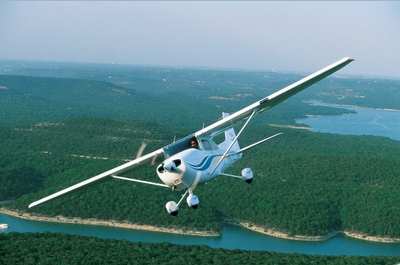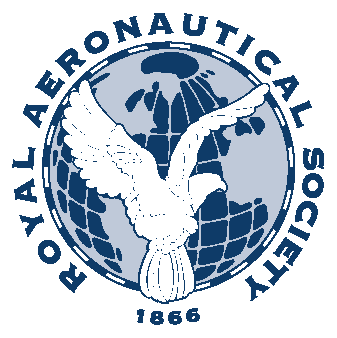Thank you, Stuart [Matthews]. You know, I’ve got to admit
something right up front. A few weeks ago, I was quite certain that
tonight I’d be talking to you only about the FAA’s
efforts toward global harmonization. After all, the Royal
Aeronautical Society stands for harmonization, and much more.
As the oldest society in the world devoted to aviation,
there’s little doubt that spreading the net of safety is of
keen interest to you. Global harmonization is a big deal, and as
well it should be. One thing we all know to be true -- safety is
the open source code of success. And it’s especially true in
aviation. In a nutshell, the FAA is hard at it when it comes to
making sure that the net of aviation safety has room enough to
spread to each of the four corners of the globe.
Worldwide, aviation is a $3 trillion business -- 29 million
jobs. The reach and grasp of aviation are formidable. Safety needs
to match it.
I'll start with China. Pick up any forecasting literature and
you will see that within years, China will have an aviation system,
an air traffic control system, that is second in the world --
second only to the United States of America. The Sleeping Giant is
asleep no longer, and its desire for a state-of-the-art system is
gathering steam. For those of you who caught the New York Times
article on February 8, the headline read: "Business Jets Taxiing
Toward Take-Off in Asia." Executives are saying, according to the
article, that there's a lack of existing infrastructure in Asia, in
terms of airports, and a complex web of airspace restrictions.
They're also saying something else: Airline travel is growing at
about 8 percent per year in China, so business travel is going to
be in the same league. China is already hard at work building their
own regional jet -- and we are right there with them.

We're doing everything we can to make sure that whether it's a
biz jet or a wide-body, that aviation in China takes a step up,
that they'll be ready for the activity as it comes along. We've
been working closely with China and the regional ICAO
representative on the safety enhancements developed by the
Commercial Aviation Safety Team, CAST. China has agreed to
implement 27 of the safety enhancements. These include installation
of Terrain Awareness Warning Systems by all of China's airlines.
Training improvements, Standard Operating Procedures, standard
checklists and other best practices are also being implemented. The
Chinese are waiting for CAST to develop additional safety
enhancements so they can continue to reduce the risk of accidents
in their operations. That's what I mean when I say we're working
with China to help it step up to the highest level of safety.
And we're not just focusing on the workings behind the Great
Wall. In concert with more than two dozen US companies like Boeing,
the majors, Lockheed-Martin, we've launched an Aviation Cooperation
Program with them that provides an inside look at our system. This
program is a US industry/public partnership with the Chinese
government to foster closer ties and transfer best practices with
the goal of increasing interoperability and safety. And while we're
showing the Chinese our operations, on the commercial side, we're
also looking to eliminate inefficient and duplicative practices.
From a practical standpoint, the US industry should have the
opportunity to showcase the latest technology and services
available. This is being done through a unified voice to China in
the aviation sector through the coordination of technical
assistance and training requirements. Under this program, they get
to see first hand our facilities in Seattle, in Atlantic City, here
in D.C. and elsewhere to see how we keep things up in the air and
keep them smooth.
 In the near term, we're also
working with China to help them understand the benefits of emerging
technologies and procedures such as ADS-B and RVSM. ADS-B is tailor
made for an environment that's challenging -- lots of aircraft,
tough terrain, infrastructure issues. We've already seen positive
results in the Alaska research project. If you were going to make a
list of the places that ADS-B is designed to serve, China would be
at or near the top.
In the near term, we're also
working with China to help them understand the benefits of emerging
technologies and procedures such as ADS-B and RVSM. ADS-B is tailor
made for an environment that's challenging -- lots of aircraft,
tough terrain, infrastructure issues. We've already seen positive
results in the Alaska research project. If you were going to make a
list of the places that ADS-B is designed to serve, China would be
at or near the top.
We're also hard at it in India, another country that's rapidly
becoming an aviation hot spot. While the United States and Western
Europe remain the largest markets, India and China are the fastest
growing. Airbus says traffic flow in domestic China is going to
grow at an 8.2 percent clip over the next 20 years. In India, it's
12.3. Domestic aviation there has been growing at double-digit
rates for several years. Boeing projects that India will buy more
than 850 large commercial transport aircraft over the next 20
years. That's $72 billion worth of airplane.
Those are the kind of numbers you can't ignore, especially when
you're spreading the net of safety. Trust me, we aren't.
As a matter of fact, we look to build upon our experience in
China by developing an Aviation Cooperation Program in India. The
US India ACP could start very shortly now that the long-awaited
agreement has been approved by the India Cabinet and is ready for
signature. We are counting on a long term relationship with India
to work with them to grow their aviation system. We have an
exciting opportunity just a few months from now -- the first US
India Aviation Summit. Three days reserved for the sole purpose of
discussing best practices, of seeing technology demonstrations, and
listening to leaders in global aviation -- who can't help but think
about the possibilities?
We're working with India on performance-based navigation. India
believes that implementing performance-based navigation will have a
significant impact on their air traffic management. We agree. In
September 2006, we provided a daylong overview presentation to them
on PBN. A second two-day PBN strategy assessment meeting will be
held in April. New Delhi has been proposed as one of the first
locations for the new ICAO-FAA-EUROCONTROL joint three-day PBN
familiarization seminar, in September of 2007. This seminar will
focus on the revised ICAO Manual on PBN, which is due this Spring.
India, for its part, has asked MITRE for a proposal on providing
specific assistance to implement performance-based navigation.
They've also asked us to give their controller workforce some
advanced training on congested airspace. I've got to admit, we have
more experience with that than I'd care to. And the flip side of
handling congestion, maintaining the equipment that lets you do it,
is another area they're asking for help in. We're planning an
orientation visit for their air traffic managers as a next step.
The timing couldn't be better.
We're also working with our Indian counterparts on GAGAN, their
GPS based satellite navigation augmentation system. When Raytheon
was awarded the contract to develop the land-based portion of
GAGAN, we agreed to assist India with its certification of the
system. Now that GAGAN is in its demonstration and validation
phase, we've offered assistance with the certification, which we've
done for Japan as well.
 I also expect movement on
negotiating a bilateral aviation safety agreement with India, which
would allow us to accept Indian airworthiness certification on some
aviation and aerospace products. We've signed a letter of intent
stating that the FAA and the Indians are going to begin discussions
on a bilateral. In fact, those discussions will begin next month.
That, from where I stand, is a very, very good sign.
I also expect movement on
negotiating a bilateral aviation safety agreement with India, which
would allow us to accept Indian airworthiness certification on some
aviation and aerospace products. We've signed a letter of intent
stating that the FAA and the Indians are going to begin discussions
on a bilateral. In fact, those discussions will begin next month.
That, from where I stand, is a very, very good sign.
As you can imagine, one of the biggest pushes for us overall is
the drive toward harmonization in Europe with our Next Generation
Air Transportation System. Our system, our skies clearly are at the
saturation point. As technology continues to jump, it's only going
to get busier. We need to transform our airspace and we are. But
getting Europe on the same page is just as important.
If NextGen and SESAR aren't compatible, if they're not on the
same page, we've taken a step forward technologically, but taken a
step back strategically. Aviation is a global business and as such,
it requires seamless interoperability. Anything less is
unacceptable. The Single European Sky Air Traffic Management
Research program has to be big enough to include NextGen and vice
versa. We're looking to make that happen.
The FAA signed an agreement with the European Commission to
formalize the collaboration and cooperation between the two
systems. The first US/European Technical Interchange meeting on
SESAR and NextGen took place here in D.C. just before Christmas.
The next one was held just a few weeks ago, and I hope that later
this year we will be able to announce some joint projects. I think
that these projects can also help to answer some of the questions
that are plaguing our industry today and to show how the newest
generation of technology, aircraft, and procedures help to reduce
noise and other environmental concerns.
But now, as I alluded to before, I'd like to turn to another
burning issue -- financing reform.
For those of you who've been reading the papers -- and this is
one group that is up to speed -- I can tell you that I feel good
that the legislation's finally out there.
Now look, there's a bit of a stick fight that's resulted, but
that doesn't mean that's where we'll end up. Getting the
legislation together in the first place was no mean feat. We met
with stakeholders and Wall Street and John Q. public for almost two
years.
And now that the legislation's out there, the same old arguments
are surfacing. General aviation is still afraid of user fees -- for
anyone -- even though they will still be paying the same old way,
the fuel tax. The people who have never paid a user fee still don't
want to. The users that have been paying more than their fair share
feel that the legislation doesn't go far enough. "A good first
step" is what the headlines said.

Let me be absolutely clear about this one: Achieving major
change is the only step. If the opportunity to enact this
legislation comes and goes on September 30th because we were
arguing about who picks up the tab, everyone loses. If you think
that a user fee is troublesome, try an air traffic system that's
totally gridlocked. When that happens, the argument about who flies
most or who pays what isn't going to matter.
If you think that the first step is all this represents -- that
we have time to burn, that our current system works just fine --
watch what happens when the taxes expire and the trust fund
dwindles.
 Fact
is, we need to transform our air transportation system. We need to
deploy technology and procedures that can handle a billion
passengers by 2015. We need to be able to handle micro-jets and
UAVs and the occasional jaunt into commercial space. Those tickets
go for 200 grand, and people are lining up.
Fact
is, we need to transform our air transportation system. We need to
deploy technology and procedures that can handle a billion
passengers by 2015. We need to be able to handle micro-jets and
UAVs and the occasional jaunt into commercial space. Those tickets
go for 200 grand, and people are lining up.
If you think that the system we've got can handle that kind of
activity, you are mistaken.
It can't, but fortunately, we know what can, and that is
NextGen. The good news is that the plan for NextGen is in place.
The foundation for NextGen is up and running. The bad news is that
with the current revenue structure, America may never make it to
NextGen.
You know it and I know it that the FAA's revenue stream has
nothing to do with the workload. If there's a business out there
that operates this way, and stays in business, I haven't seen
it.
In the past, the FAA has been rightly criticized for not
operating like a business. Well, now we are. Ninety-seven percent
of our major capital programs are on time and under budget. We're
upgrading the flight service stations and saving billions. We are
indeed operating like a business.
So with all of that said, I'm telling you here and now that the
taxpayer no longer wants to be the deep pocket. Commercial airline
passengers are in the most heavily taxed seat in all of aviation.
John Q. also foots the bill for a number of administrative costs.
Our proposal moves to put fees in place for several services that
had been largely gratis, such as a special registration number. The
man in the street expects to pay for a personalized license plate
for the car. It's about time for aviation as well.
If you're wondering where all this is headed, it's here: we have
been presented with an historic opportunity to alter the future of
aviation by creating a Next Generation system that truly delivers.
We owe it to the traveling public. We owe it to America. Our
economy hinges on aviation, and we can ill-afford to blow this
chance to give our citizens a system that can handle what the
future may bring -- will bring. Let's make it happen.
 ANN's Daily Aero-Linx (04.15.24)
ANN's Daily Aero-Linx (04.15.24) Classic Aero-TV: 'No Other Options' -- The Israeli Air Force's Danny Shapira
Classic Aero-TV: 'No Other Options' -- The Israeli Air Force's Danny Shapira Aero-News: Quote of the Day (04.15.24)
Aero-News: Quote of the Day (04.15.24) Airborne 04.16.24: RV Update, Affordable Flying Expo, Diamond Lil
Airborne 04.16.24: RV Update, Affordable Flying Expo, Diamond Lil ANN's Daily Aero-Term (04.16.24): Chart Supplement US
ANN's Daily Aero-Term (04.16.24): Chart Supplement US








